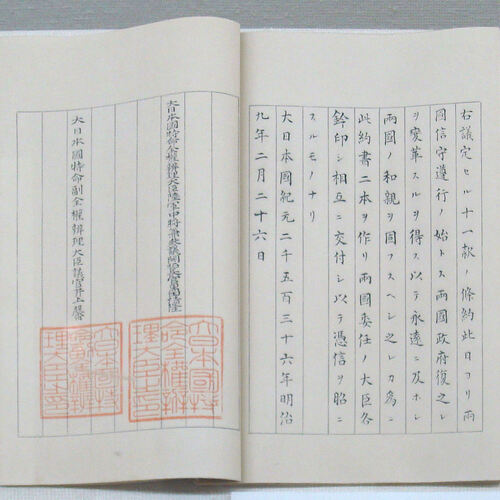Browse Exhibits (126 total)
Global Tensions During The Cold War

Introduction
The Cold War (1946-1991) was a defining period in the 20th century, characterized by intense geopolitical rivalry, ideological confrontation, and the constant threat of global conflict. Emerging in the aftermath of World War II, this battle pitted the democratic and capitalist United States against the communist Soviet Union. These nations were considered the world’s two superpowers because of their nuclear advancements, and their conflict to determine global supremacy resulted in significant tension and uncertainty around the world. The term “Cold War” reflects the absence of direct armed conflict between these nuclear-armed giants, but it does not diminish the intensity of their competition, which played out on multiple fronts.
The Civil War-The Division Between North and South
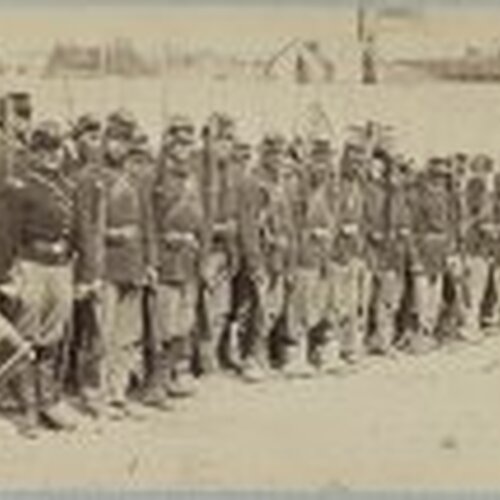
For this exhibit, our group decided to focus on the events of the Civil War. The Civil War was not only one of the most impactful wars in United States history but also greatly affected the lives of millions of Americans. From the Battle of Antietam to Fredericksburg to Gettysburg, hundreds of thousands of soldiers lost their lives fighting on battlefields across the Northern and Southern United States. Our goal as a group regarding this exhibit is to provide viewing audiences with a greater understanding of the Civil War through the use of visual illustrations and interactive maps. We hope that viewers of this exhibit will develop an appreciation for the impact that the Civil War had on our nation and the lessons that can be learned from this incredibly monumental war. This exhibit on the Civil War includes 3 subtopics: photography during the Civil War, life in the North vs. South, and important battles that changed the tide of the Civil War. The section “Photography's Important”, will focus on the development of photography throughout the war, as well as notable photographs taken during the war. “Civilian Life and Newspapers of the Civil War”, will be concentrated on the lives of both Union and Confederate citizens during the war, as well as newspaper articles that showed what it was like during that time period. “Important Battles that Changed the Tide Civil War”, will focus on the Battle of Antietam, Battle of Fredericksburg, and Battle of Gettysburg, and expain how each of these battles impacted the outcome of the Civil War.
Empowering Inclusivity through Disability History
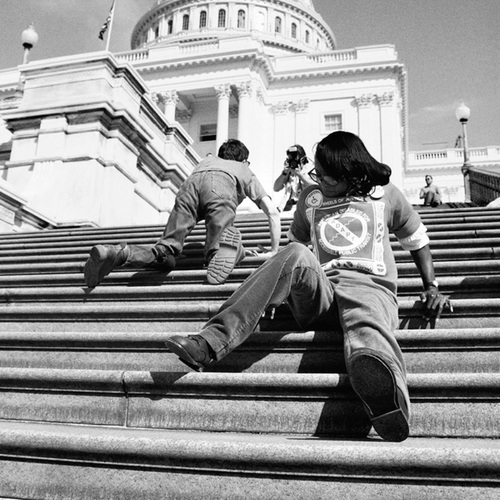
This exhibit serves as a means to provide context for the numerous issues and contributions made by the Disability Rights Movement, alongside Disability activists, who have been instrumental in shaping American society. The Disability Rights Movement gained momentum due to the return of veterans with both physical and mental disabilities after World War II. Their homecoming marked a period of reintegration, during which they faced the challenge of bridging the economic gap between the pre- and post-World War II eras. Moreover, to make this economic transition viable, they needed to be reintegrated into society. However, this proved to be a formidable task due to the inaccessibility of America, and the encompassing physical and mental dimensions. Our exhibit will encompass the disposition towards individuals with disabilities in congruence with the rise of Disability Rights and legislation post WWII. We will then begin to distinguish the physical and mental disabilities, and discern the legal and societal obstacles individuals encounter in institutional settings, education, and broader society. Crucial legislation came to the forefront of Disability Rights as a response to the surge in Disability Rights activities; driven by a strong sense of post-World War II nationalism. There was a notable shift towards more inclusive legislation throughout the Disability Rights Movement, culminating in the Americans with Disabilities Act (ADA). Prior to discussing this act, the Architectural Barriers Act (ABA), the Mental Retardation Facilities and Community Mental Health Centers Construction Act (CMHC), and the Individuals with Disabilities Education Act (IDEA) will be presented in providing the base groundworks for the history of Disability Legislation.
An Exploration of the Civil Rights Movement

This website explores the Civil Rights Movement from the 1950s to the 1990s. This era not only transformed the United States by challenging racial discrimination and segregation but also set a precedent for movements advocating for civil rights and social justice around the world. It remains a symbol of the power of collective action and the struggle for a more equitable society. The objective of this project is not just to recount historical facts, but to also explore the movement that challenged the status quo of an era diminished by systemic discrimination, segregation, and injustice.
Our first article "Breaking the Chains of Segregation: The Long Road to Integrated Education in America" analyzes the journey of desegregating public education in America. By using pivotal events such as Brown v. Board of Education and The Birmingham Campaign shaped the way we provide legal, political, and moral foundations for the struggle against racial inequality in the United States.
The second article "L.A. Riots and the Origins of African American-Korean Tensions" explore the systemic issues that led to the Los Angeles riots of 1992. Through an in-depth analysis, we can see the social, cultural, and economic factors that greatly contributed to the misconceptions and misunderstandings between the African American and Korean American communities in Los Angeles.
The third article "Civil Rights and Liberties: Manzanar Relocation Center" illustrates the physical, emotional, and mental experiences that Japanese Americans, more specifically the Japanese American children, endured during the World War II internment camp period from 1942 to 1945.
For the fourth article, "The "Battle" for Alcatraz: How the Infamous Prison Became a Frontier of Native American Civil Rights" explores themes of Native resistance during the 1969-1971 Alcatraz Occupation by the organization Indians of All Tribes (IAT) and how their efforts went on to influence Native Civil Rights movements like AIM (American Indian Movement) and create an enduring legacy of Native civil liberties.
Lastly, the fifth article "Civil Voting Rights" showcases the Civil Voting rights from 1957 to 1965 by highlighting the struggles African Americans faced to pursue voting rights while facing systematic backlash.
Through our comprehensive analyses and targeted investigations, our shared aim is to shed light on the challenges and adversities faced by various communities. This knowledge is essential for gaining insights into the diverse groups to foster the foundation for a fair and equitable society.
1590 Jesuit Press in Nagasaki, Japan
Hi everyone!
I’m Gema Sanchez Gamez and for my final project for English 12H, Literatures of the World, I researched the 1590 Jesuit printing press in Nagasaki, Japan.
As you will learn, the 1590 Jesuit printing press has an extremely interesting history that shows the importance of religious education and the use of books as preachers in the midst of persecution. Due to the tense religious climate in 16th century Japan created by Emperor Hideyoshi and his 1587 Edicts against Christianity, the press had to be moved around constantly and most of the works were unfortunately burned.
This press had a significant impact on the expansion of Christianity in Japan as well as European consciousness of Japan that I hope you will understand better as you navigate through this exhibit. I’d suggest clicking down in chronological order to better understand the full social, literary, cultural, and political effects of this press.
Enjoy!
Will Thornhill's Rise to the Top: A Byproduct of Colonialism
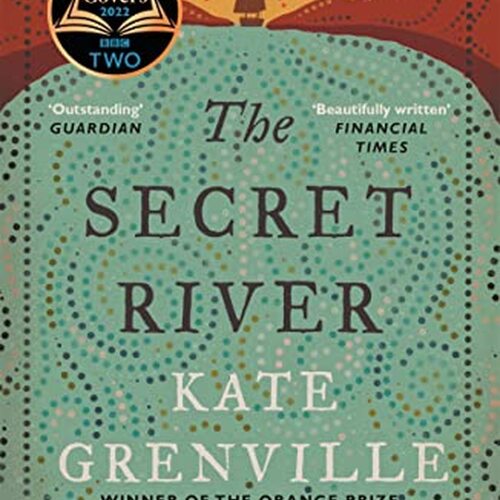
For my final project, I chose to focus on class relations in The Secret River and how the division of wealth and power was influenced by this. This exhibit will compare Will Thornhill's experience in England, where social mobility was unreachable, in contrast to his experience in colonial Australia, where he was able to rise up in wealth and power. My research and exhibit intends to make the argument that Will's social mobility wouldn't have been possible without colonialism.
Have fun exploring! I recommend navigating following the order of the table of contents. Note: The England section has a dropdown menu with more things to view and interact with!
The Sydney Gazette: Australia's First Printing Press
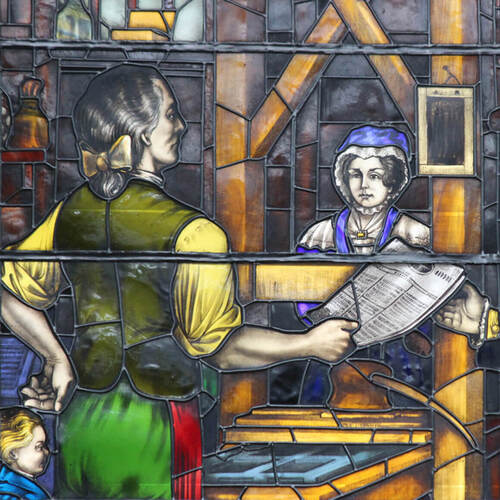
Hi all, welcome to my exhibit on Australia's first printing press, its primary operator and the newspaper printed on it!
The advent of the printing press in the 15th century revolutionized the world of literature and information. However, not just countries which existed then underwent this revolution. New South Wales, a penal colony of Britain, was founded in 1787 and despite having access to a press from the beginning, it was almost ten years before anyone was able to make use of it. Printing requires expertise, resources and time, all of which the colony had a scarcity of. In this presentation I will track the growth of print in the early years of colonization in Australia, from a tiny government-ran operation to a booming and influential industry.
The history of print in Australia only truly began with the arrival of George Howe, a professional printer and convict from the West Indies. Much of this exhibit will detail Howe's life and business ventures, however on account of his untimely demise and the founding of other notable publications (largely thanks to Howe's pioneering), we will also look at others involved in this industry. The Sydney Gazette was a newspaper founded by Howe and was the first and only publication in New South Wales for two decades. This newspaper, although founded and operated by a single convict who narrowly escaped a death sentence, had a profound effect on Australian society and the rest of the British empire, and was the seed for the flourishing Australian press and literature. I hope this exhibit conveys the incredible influence that was achieved by a single machine and person willing to operate it, and I look forward to sharing with you!
Navigation: Use the yellow links in the menu at the top right of the window, or use the arrows at the bottom of the window to navigate this exhibit. You should be able to browse the exhibit in any order you like, although I recommend starting with the uppermost three pages to learn some background information!
Enjoy.


